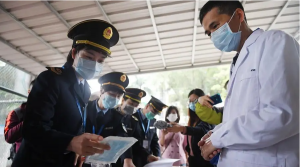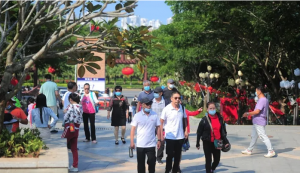
7 new indigenous confirmed cases and 109 new indigenous asymptomatic infections in Heilongjiang Province
From 0 to 24 September 21, there were 7 new local confirmed cases in Heilongjiang Province, 4 cases in Harbin City (all in Xiangfang District), all found in centralized isolation; 3 cases in Jiamusi City (all in Xiangyang District), of which 1 case was found in centralized isolation and 2 cases were found in home isolation for medical observation. There were 109 new cases of indigenous asymptomatic infections, 74 cases in Jiamusi (46 cases in Xiangyang District, 18 cases in Qianjin District, 8 cases in the suburbs, and 2 cases in Dongfeng District), of which 45 cases were found in centralized isolation, 27 cases were found in home isolation under medical observation, 1 case was found in high-risk area screening, and 1 case was found in medium-risk area screening; 32 cases in Heihe City (all in Aihui District), of which 25 cases were found in community screening and 7 cases were found in centralized isolation 2 cases in Harbin City (both in Xiangfang District), both found in centralized isolation; 1 case in Daqing City (in Longfeng District), found in centralized isolation. There was one new confirmed case imported from abroad (reported in Harbin) and three new cases of asymptomatic infections imported from abroad (reported in Harbin). Cured and discharged 7 cases of local confirmed cases (all in Daqing) and released from medical observation 110 cases of local asymptomatic infections (including 99 cases in Daqing, 10 cases in Suihua and 1 case in Heihe); cured and discharged 2 cases of overseas imported confirmed cases and released from medical observation 1 case of overseas imported asymptomatic infections.
As of 24:00 on September 21, there were 29 local confirmed cases and 620 local asymptomatic infections in the province; there were 22 cases of overseas imported confirmed cases and 26 overseas imported asymptomatic infections in the province.
In order to fully implement the general strategy of “external prevention of importation and internal prevention of rebound” and the general policy of “dynamic zero”, and effectively control and reduce the risk of importation and spread of the epidemic, the general public is invited to deeply understand the complexity, enormity and recurrence of the epidemic prevention and control, and firmly establish The general public is urged to understand the complexity, enormity and recurrence of the epidemic, firmly establish the concept of “everyone is the first person responsible for his or her own health”, enhance the awareness of prevention, refrain from going to medium and high-risk areas and key areas of the epidemic unless necessary, insist on “wearing masks, washing hands regularly, ventilating more and not gathering”, pay close attention to the epidemic situation, and pay close attention to the activities of positive infected persons if they cross paths. If you have interactions with positive infected persons or have a history of staying in medium to high-risk areas or epidemic-related areas in China within 7 days, take the initiative to report to your community (village or town) or work unit immediately and cooperate with the implementation of preventive and control measures. If symptoms such as fever, dry cough, weakness, sore throat, loss of smell (taste), diarrhea, etc. occur, do not take medication on your own, wear a mask and go to the nearest medical institution as soon as possible for fever screening and consultation, avoid taking public transportation during the consultation process, and take the initiative to inform the history of residence and contact history.
The epidemic prevention and control command in each city should check the recent arrival (return) of people with a history of residence in the province, strengthen “big data + grid”, accurately grasp and control the relevant risk personnel, and implement classification and control measures such as code assignment, nucleic acid testing, isolation management and health monitoring in the first instance after the risk personnel are assessed to be at risk of infection. The first thing to do is to implement categorized control measures such as code assignment, nucleic acid testing, isolation management and health monitoring.


Average Rating